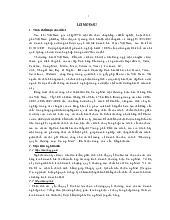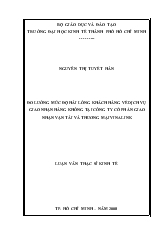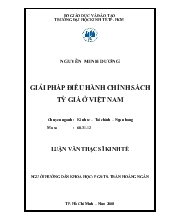Tóm tắt Luận án Synthesis and characterization of trace elements co – Doped hydroxyapatite on 316l stainless steel application in bone implant
- Người chia sẻ :
- Số trang : 27 trang
- Lượt xem : 10
- Lượt tải : 500
- Tất cả luận văn được sưu tầm từ nhiều nguồn, chúng tôi không chịu trách nhiệm bản quyền nếu bạn sử dụng vào mục đích thương mại
Bạn đang xem trước 20 trang tài liệu Tóm tắt Luận án Synthesis and characterization of trace elements co – Doped hydroxyapatite on 316l stainless steel application in bone implant, để xem tài liệu hoàn chỉnh bạn click vào nút DOWNLOAD LUẬN VĂN ở trên
Nowadays, 316L stainless steel (316LSS), titanium and alloys of titanium are widely used in orthopedic surgery with the purpose of splinting bone. Materials made of titanium and titanium alloy have a good mechanical properties and good biocompatibility but they have a high cost. Therefore, in Vietnam, to reduce the cost of medical services, most of the splints are made of 316L stainless steel. However, 316L stainless steel could be corroded and limited the ability of biological compatibility in the biological environment. To improve these problems, 316LSS is generally coated biomaterials such as hydroxyapatite (Ca10(PO4)6(OH)2, HAp). HAp has chemical composition and biological activity similar to the natural bone. HAp could stimulate the bonding between the host bone to implant materials and make bone healing ability faster. Moreover, HAp also protects for the metal surfaces against corrosion and prevents the release of metal ions from the substrates into the environment. However, pure HAp has been dissolved in the physiological environment which may lead to the disintegration of the coatings and affects the implant fixation. These disadvantages could deal with doping some trace elements in the HAp structure by replacing Ca2+ ions with cations and substituting OHgroup with anions. In addition, the present of trace element such as magnesium, sodium, strontium, fluorine, zinc has also the role to stimulate the new bone formation and provides minerals for bone cells to grow. Besides, the problem of postoperative infection should be concerned. Thus, antibacterial elements such as copper, silver and zinc are also being studied to incorporated into HAp. Based on the reasons mentioned above, the research topic of thesis is chosen as following: “Synthesis and characterizations of trace elements codoped hydroxyapatite coatings on 316L stainless steel application in bone implaint”




